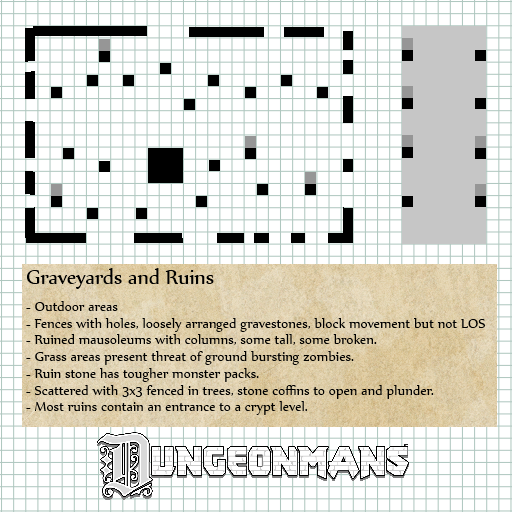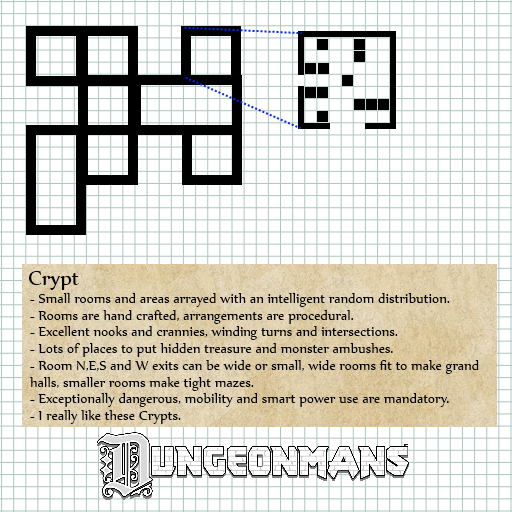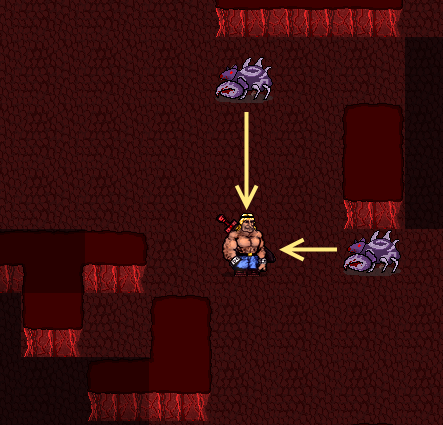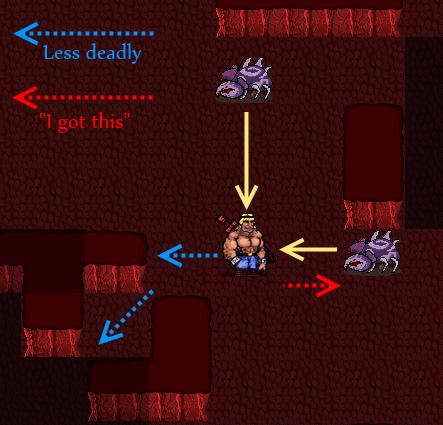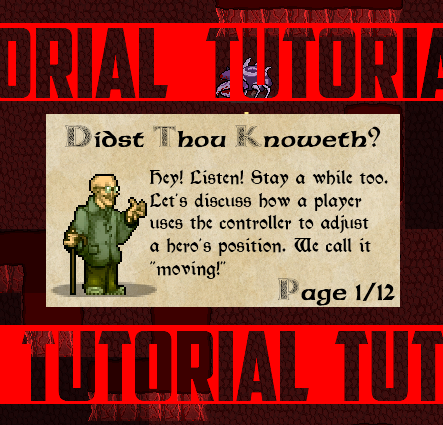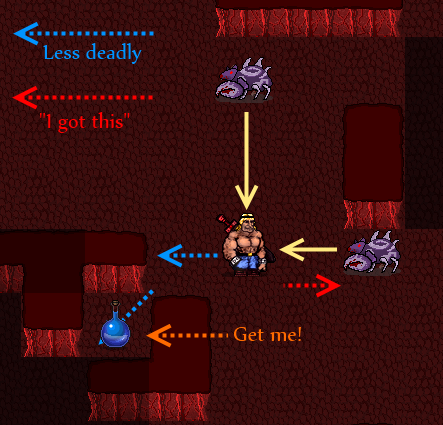First of all, if it’s still 28 February 2013 and between 12 and 2 PM Eastern Standard Time, stop reading this and check out artist Bobby Frye as he streams some of his sprite work on Dungeonmans. It is an incredibly more rewarding experience than reading a dusty old development update.
This week in Dungeonmans Development has been a whirlwind of bug fixing and business development, and not quite as much fun new features as I like. I’ve given myself monthly milestones and so the last week of the month is often a time to cross i’s, dot t’s, and generally clean up whatever messes I might have made while putting stuff together.
I did manage to complete the layout and generation of Caves, which actually might be better off being called Tunnels given the design. They are build to connect two points in the overworld map, you enter one side and come out the other. A good deal of exploring a cave involves winding tunnels and larger caverns, with passageways that go in many different directions. There’s a main passage from one side to the other, but it isn’t always obvious which means there will be some wrong turns along the way. Fortunately for our hero, caverns that are otherwise dead ends usually contain a camp of monsters who are lairing or just hanging out, guarding a worthy pile of treasure. Exploration will be rewarding no matter what direction the player heads off in.
What’s the big deal about two entrances? In the overworld, Mountains and Badlands provide a mazelike environment to explore, and sometimes a mountain range presents a barrier that the player is forced to go around. Caves help get around that, allow the player a shortcut to locations that might otherwise require long overworld journeys. Exploring is great fun, but it is also nice to be able to claim clear paths from one place to another when you have a destination in mind.
Other than that, I spent some time clearing out old cruft from the codebase to make it easier to write area generation functions, fixed some annoying save game bugs, and did some work into making Dungeonmans scale to any resolution. I also received some absolutely wonderful environment art for the Graveyard, once that gets wrapped up I am totally putting together some new screenshots.



